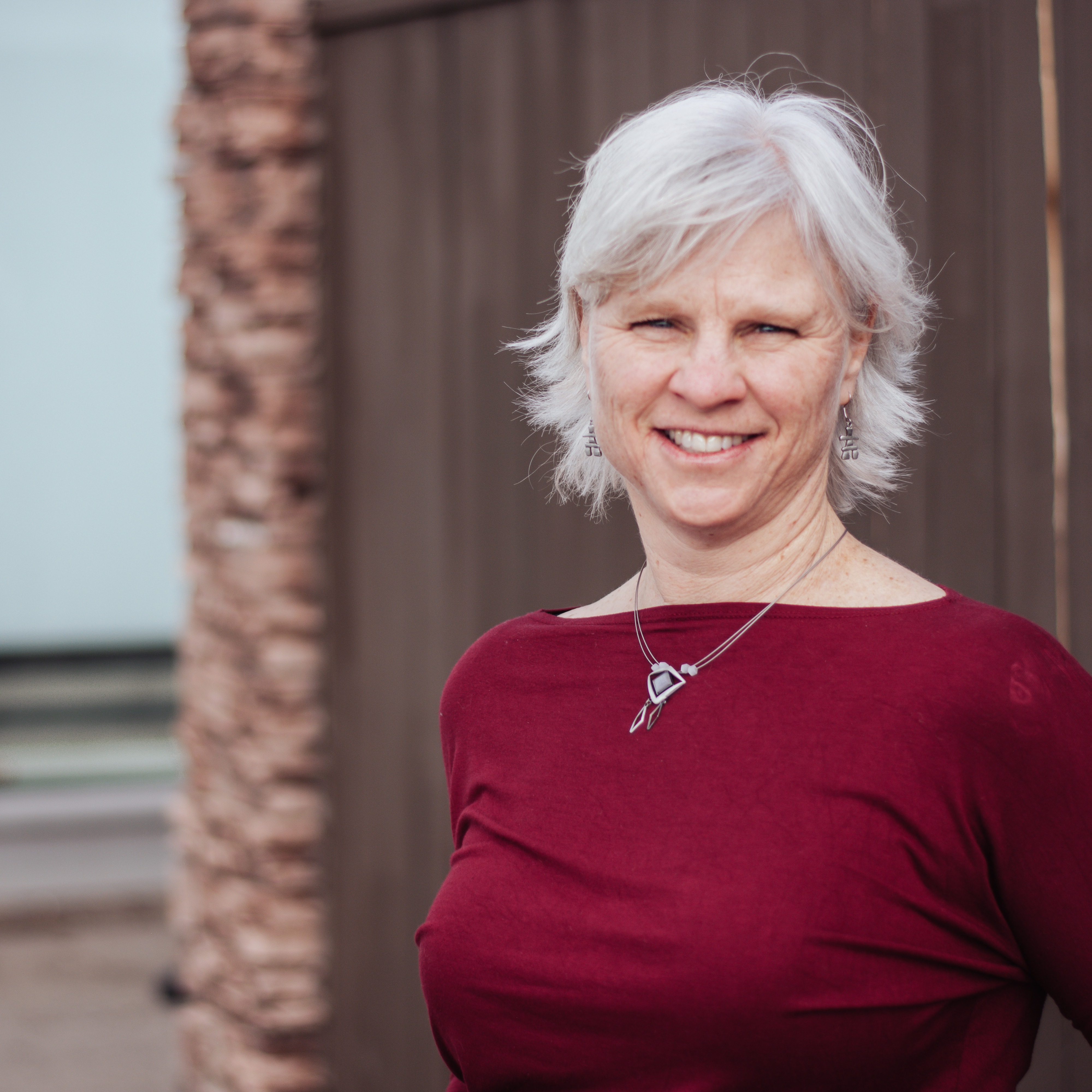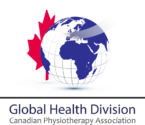About Us
Our Team

Derek Lai
Co-Chair
Location: Vancouver, BC, Canada
Areas of interest within the physiotherapy scope:
Intersections of public health, social determinants of health, built environment, active transportation
What sorts of activities do you like to do in your spare time?
Trail running, books, skiing, backcountry camping and editing the Global Physio Podcast!
What do you value most as a physiotherapist when working with your clients?
The potential physiotherapist have not just in physical health, but mental, social and environmental health
What does GHD mean to you/what significance does GHD hold for you?
It’s an opportunity to continue to build this community of healthcare professionals that acknowledges the interconnectedness between global and local issues, humans and our environment and the systems that are involved contribute to health equity.

Stephanie Molloy
Education Officer
Location: Montreal
Areas of interest within the physiotherapy scope: Equity, equal access to care for all, acute care, trauma informed care, running the organization Justice Centered Rehab
What sorts of activities do you like to do in your spare time?
Rock climbing, biking, reading, movies, artsy things, trying new recipes
What do you value most as a physiotherapist when working with your clients?
Building a bond with a patient, building autonomy, following patients closely and seeing them go through changes and bringing joy into their days
What does GHD mean to you/what significance does GHD hold for you?
The GHD is an opportunity and safe space to talk and discuss with like minded colleagues about important topics in furthering PT not just abroad but really at home. Bringing ideas of justice, equity, and more into everyday practice. It’s also very important in showing other PTs that they’re not alone or that these aren’t small or unimportant topics but they’re valuable and should be discussed.

Jordan Stapleford
Knowledge Translation
Areas of interest within the physiotherapy scope: Geriatrics & Healthy Aging, Whole Person-Centered Care, Environmental Sustainability in Health Care, Women’s Health, Education Empowerment Exercise
What sorts of activities do you like to do in your spare time?
Running, Snowboarding, Basketball, Beach Volleyball, Hiking & Climbing & camping, quality time with family and friends.
What do you value most as a physiotherapist when working with your clients?
The opportunity to hear about someone’s lived experience of their movement/bodies/hurdles, contributing to their definition of an improved quality of life, empowering people and giving them permission to find fulfillment in their health and movement, building relationships with clients and families, advocating for the health and lifestyle all people deserve.
What does GHD mean to you/what significance does GHD hold for you?
To me, global health brings all people and all places together. It is about acknowledging the type of care, health and sustainability all people deserve and speaking out about the ways our systems are not currently functioning in that way. It intersects with the all social determinants of health and calls us to action to disrupt the barriers in place and the ways we preserve these barriers. To me global health means fighting for healthy a government, system, planet and people.

Wanda Chen
Treasurer
Location: Oakville, ON, Canada
Areas of interest within the physiotherapy scope: I’m particularly interested in musculoskeletal injuries, the myofascial system and pain, ergonomics, post-operative rehabilitation, preventative care, environmental physiotherapy, and sustainability practices.
What sorts of activities do you like to do in your spare time?
I enjoy Zumba, working out, stretching, skating, camping, spending time in nature, and playing with my kids.
What do you value most as a physiotherapist when working with your clients?
Building strong relationships with patients is key to effective treatment. A solid rapport not only enhances engagement and motivation but also leads to better treatment outcomes, making the process more rewarding for both patient and therapist.
What does GHD mean to you/what significance does GHD hold for you?
Global health encompasses a wide range of issues, including diversity, equity, inclusion, and environmental sustainability. Integrating these ESG (Environmental, Social, and Governance) principles into physiotherapy is essential for advancing the profession and fostering a holistic approach to patient care, including prevention focus.

Theresa Muddada
Co-Chair
Location: Toronto, ON, Canada
Areas of interest within the physiotherapy scope:
Acute Care, Cardiorespiratory care, Musculoskeletal Sciences, Ortho-Surgery, supervision of students, and volunteering for OPA, CAPR, and the CPA.
What sorts of activities do you like to do in your spare time?
Horse riding, traveling, reading, snowmobile, zipline, reading up on ancient history, spending time with loved ones, and volunteering.
What do you value most as a physiotherapist when working with your clients?
The interaction with patients– watching the joy of patients achieving their goals, whether it’s sitting at the edge-of-the-bed, taking their first step after prolonged immobility, a safe discharge home to their families, advocating on behalf of patients and their families, and recognition of the profession.
What does GHD mean to you/what significance does GHD hold for you?
An opportunity to collaborate with like minded healthcare professionals, and organizations. A commitment to ethical practice and social responsibility to address health inequities, and work towards emphasizing the importance of equity, access, justice and sustainable practices in healthcare.

Denise Taylor
Indigenous Health Sub-committee Chair
Location: Thunder Bay
Areas of interest within the physiotherapy scope: Indigenous Health, access, Truth and Reconciliation, Health promotion, Public Health, Social Determinants of health
What sorts of activities do you like to do in your spare time?
Kayak, canoe, cycle, hike, read, garden, hockey, family
What do you value most as a physiotherapist when working with your clients?
Client-centered care
What does GHD mean to you/what significance does GHD hold for you?
Access to cultural safe care- health equity- intersectionality

Noémie Tito
Location: Victoria, BC
Areas of interest within the physiotherapy scope: Homecare geriatric care, Occupational health, Equity and developing access to PT services, Helping to run the organization Justice Centered Rehab
What sorts of activities do you like to do in your spare time?
Ultramarathon running, rock climbing, outdoor adventuring, crocheting and learning how to play the tin whistle!
What do you value most as a physiotherapist when working with your clients?
The opportunity to build genuine connections with my clients, fostering trust and understanding. Being able to empower each person by working collaboratively, ensuring they feel heard, informed, and actively involved in their care and giving them the tools to take control of their health. The ability to make a positive, lasting impact in someone’s life.
What does GHD mean to you/what significance does GHD hold for you?
A vital space for connection, reflection, and action. A platform where like-minded individuals can come together to explore and advocate for equity, justice, and inclusion within the physiotherapy field and create positive, sometimes disruptive changes in our systems to improve the health of our people, our collective, and our planet, on a global and local scale.
GHD Executive Role Descriptions
ALL Global Health Division (GHD) executive members are expected to:
- Attend regular virtual meetings and not miss more than three (3) meetings per year. In the event of needing to miss a meeting, the executive member will inform the secretary in advance and provide a written update regarding their position and an update on all relevant outstanding action items prior to the meeting.
- Regularly send information related to their position for posting on social media to the Canadian Physiotherapy Association’s (CPA) Communications Specialist or the GHD Executive or Sub-Committee member responsible for posting on the GHD social media channels.
- Assist in recruiting new GHD Executive, Sub-Committee, and general members.
- Engage in public speaking about the GHD as opportunities arise.
Read more about the GHD Executive Roles
We are currently accepting Letters of Intent and CVs for the Executive!
Email: globalhealth@physiotherapy.ca
Sub-Committees:
Physiotherapy Students
Indigenous Health
Knowledge Translation
Communications
Read more about the GHD Executive Sub-Committee Roles.
We are currently accepting new members to all sub-committees. If you are interested in joining a sub-committee, please contact us at globalhealth@physiotherapy.ca.
Strategic Pillars and Action
Integrating a Social Determinants of Health Lens
- Host webinars that illustrates the impact of social determinants on physiotherapy and rehabilitation outcomes
- Support and promote Global Physio Podcast to elevate conversations centered on power, social justice and physiotherapy.
- Update and promote the GHD Embodia course
Indigenous Health and Cultural Safety
- Build advocacy and collaborative relationship between CPA, GHD,IHS and Indigenous communities to advise on actions that advance Indigenous Peoples health in Canada
- Increase the capacity of Canadian physiotherapists to deliver culturally safe services through unlearning and learning of the impact of colonization, historical traumas, the consequences of treaties and the TRC Calls to Action on health outcomes
Build a Community of Practice
- Continue to build connections between existing, new physiotherapist and students via various channel
- Leverage connections with universities and student body to increase student participation and voice within GHD
- Connect physiotherapists with physiotherapists and organizations involved in sustainable global work.
Become a member
LoginBecome a member
Login